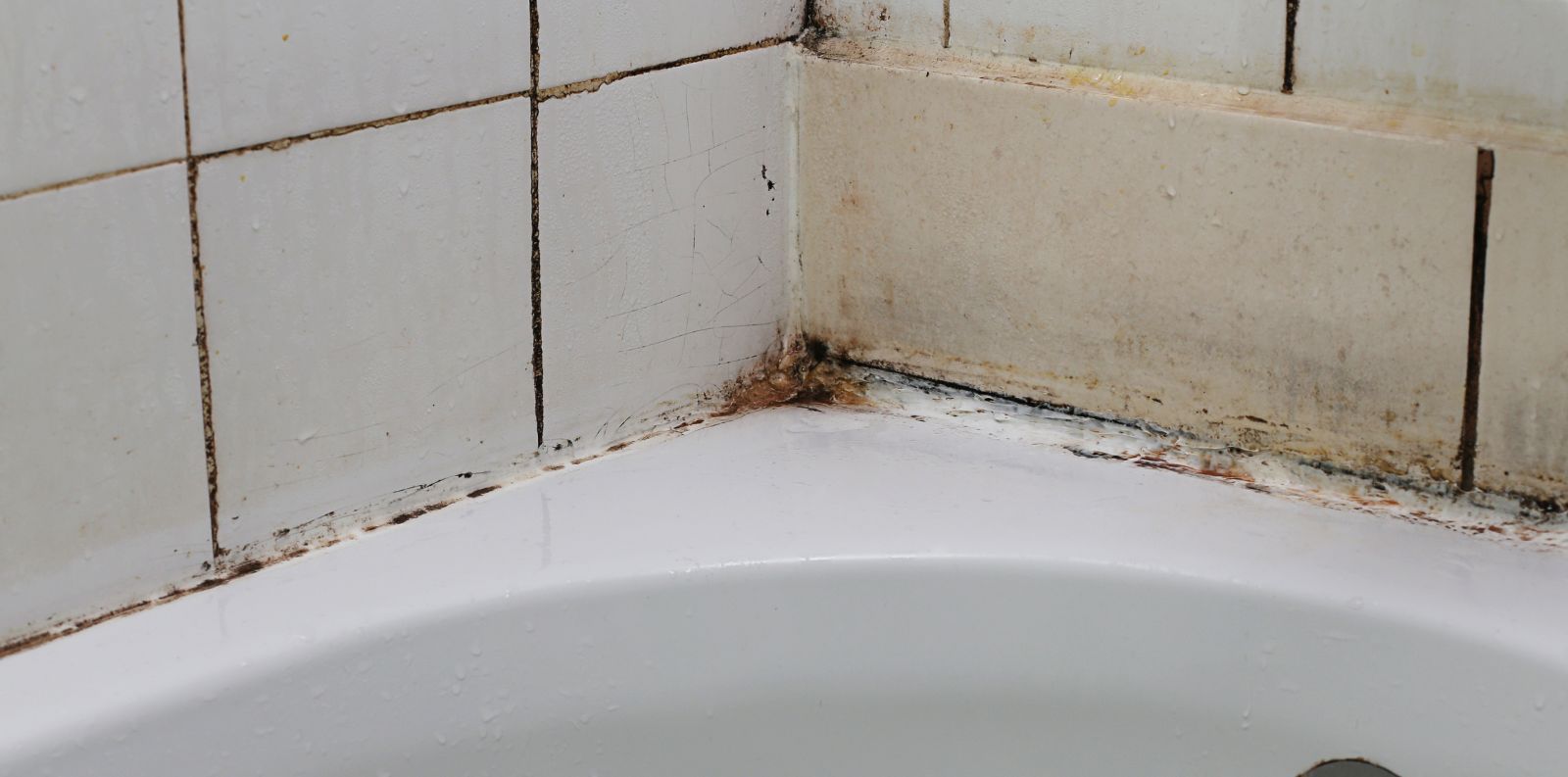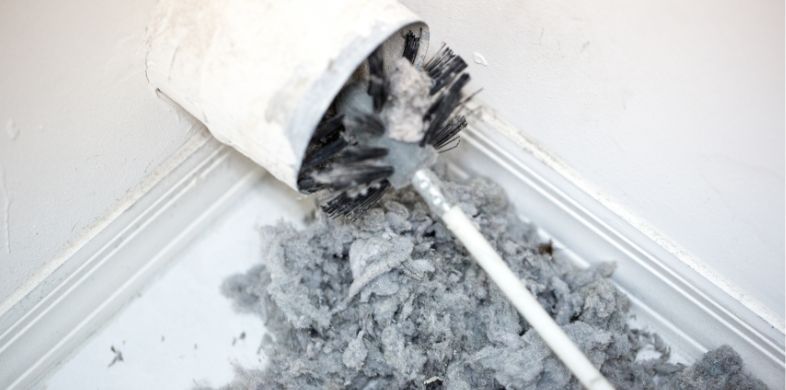
Cleaning Mold From the Shower: The Ultimate Guide
Of all the types of mold that can spawn in your house, bathroom mold is one of the peskiest to deal with. When mold grows in our bathrooms, it not only affects the aesthetics of the room but also poses a health concern. Some studies have connected exposure to mold with the development of asthma and other respiratory tract health issues.
If you are dealing with this issue, you’ve surely wondered how to clean mold in shower without leaving a trace behind. Don’t worry, you are not alone – dealing with mold in the shower can be a quite common and frustrating problem.
So, what tools and methods should you use to restore your shower’s cleanliness and create a healthier environment for you and your family? Below, we will provide you with effective techniques and expert tips for cleaning and removing mold in shower.
What Is Mold & Why Does It Appear in the Shower?
Mold is a fungal structure that thrives in damp environments, making the shower an ideal breeding ground for this “uninvited house guest.” It tends to grow relatively fast and reproduces by releasing tiny spores into the air, which can settle on surfaces and begin to grow under favorable conditions, such as our showers.
Mold may appear in different colors, such as black, green, or sometimes even pink spots on various surfaces, including shower walls, tiles, shower grout, and even shower curtains.
Typically, for mold to grow, there is a three-item checklist: moisture, suitable warm temperatures, and a food source. When you take a shower, the warm water and steam create a moist environment that checks two first two boxes on the list. The presence of organic materials also contributes to mold growth in the shower, while soap, body oils, shampoo residue, and other substances that accumulate on shower surfaces serve as a food source for mold, covering the third item from the checklist.
Hence, these conditions make the shower an ideal habitat for mold, which can quickly lead to visible and unpleasant mold sites. In addition, if the bathroom doesn’t have proper ventilation, the moisture generated during showers can’t escape easily.
The Dangers of Shower Mold
Shower mold is not just a simple and unsightly issue, it can also pose serious risks to your health and well-being, and that’s why it’s key to clean mold in shower. Removing mold in shower on time is crucial for maintaining a clean and safe bathroom environment. But what are the real dangers of shower mold?
If left untreated, mold can spread and potentially cause damage to the living environment and impose some health issues. To effectively clean mold in shower and stop it from affecting your health and the health of your family members, a proactive approach is the best way to go.
Health Concerns
Here are the most common health concerns associated with shower mold:
Respiratory Issues
Mold releases spores into the air, which can trigger respiratory problems, particularly in individuals with allergies, asthma, or compromised immune systems. Breathing in these spores can cause symptoms such as coughing, wheezing, sneezing, and nasal congestion, while prolonged exposure to mold spores may lead to more severe respiratory conditions. That is why mold removal in shower is a must when dealing with a situation like this.
Allergic Reactions
Shower mold can trigger allergic reactions in sensitive individuals, with symptoms ranging from itchy eyes, runny nose, skin irritation, and throat irritation. These allergic reactions can be particularly troublesome for those with pre-existing allergies or sensitivities to mold.
Infections
Some mold types, such as black mold (Stachybotrys chartarum), can produce mycotoxins that are harmful to humans. Exposure to these mycotoxins can result in skin infections and rashes, respiratory infections, and even systemic infections in severe cases. How to clean black mold in shower is a concern for many people nowadays.
Damage to the Structure of the Property
Mold growth in the shower can also lead to structural damage to the property over time, and that is another reason why it’s important to know how to clean mold in shower. Mold can eat away at the materials it grows on, such as grout, caulk, and drywall, weakening the integrity of these surfaces and requiring costly repairs or replacements.
Visuals and Odors
When you don’t bother with mold removal in shower, the mold itself can produce a musty and unpleasant odor that can settle in the bathroom, making it an unwelcome space for both residents and house guests. The presence of mold can also ruin the aesthetic appeal of the shower, diminishing the overall cleanliness and visual look of the bathroom.
How to Clean Mold in Shower: Step-by-Step Guide
How to remove mold from shower is a frequent dilemma, as all of us want to maintain a healthy and hygienic bathroom environment.
Many people choose to hire professional service companies for mold removal in shower, as it’s generally considered the safest and most efficient practice for shower mold. However, with the help of our step-by-step guide, you will also get good results doing it yourself:
Step 1 – Safety Precautions
Before removing mold in shower, prioritize your safety and wear gloves to protect your hands and a face mask to prevent inhalation of mold spores and cleaning agents. Proper ventilation in the bathroom is also important to minimize exposure to airborne particles. This step is a must, as black mold can make you sick and cause health issues.
Step 2: Identifying the Mold Spots
Examine your shower area to identify the extent of mold growth. Check the walls, tiles, shower grout lines, caulk, and shower curtains for visible signs of mold, such as discoloration, black spots, or a fuzzy texture.
Step 3: Prepare the Cleaning Solution
Choose an appropriate cleaning solution for the type of mold and the surface you are cleaning. You can go for natural options like vinegar or hydrogen peroxide that are effective and environmentally friendly, or you can use bleach or other dedicated mold products, which are more invasive but compatible with more serious mold scenarios.
Dilute the cleaning solution or use it directly from the bottle, depending on the product. If you go for a natural mix, combine water with either baking soda, vinegar, or 3% hydrogen peroxide to clean mold in shower.
Step 4: Apply the Cleaning Solution
Apply the cleaning solution directly to the mold-affected areas using a spray bottle, and make sure you cover the mold stains thoroughly. Allow the cleaning solution to sit for a few minutes to penetrate the mold and break it down.
Step 5: Scrub the Mold
With a scrub brush or sponge, gently scrub the mold-affected areas in a circular motion, and apply pressure accordingly to the severity of the mold and the surface you are dealing with. Be careful not to damage the surfaces, and continue scrubbing until mold removal in shower is complete. If you’re wondering how to clean mold in shower grout, this is the way.
Step 6: Rinse and Dry the Shower
The final step is to thoroughly rinse the shower surfaces with water to remove any remaining mold debris and cleaning solution. After rinsing, use a clean towel or squeegee to remove excess moisture from the shower surfaces.
Extra Tips for Prevention Measures
To minimize the chances of mold regrowth, implement preventive measures:
- To prevent mold in the shower, you can spray a mixture of water and vinegar or a commercial mold prevention spray that contains mold inhibitors.
- Wipe down the shower surfaces after each use to remove excess moisture, as properly drying the shower helps prevent the reoccurrence of mold.
- Improve ventilation by using an exhaust fan or opening windows during and after showers to improve air circulation and speed up the drying process.
Removing Mold in Shower: Final Take
If you’ve been struggling to get rid of mold in the bathroom, there are two ways to get rid of it.
If you take the DIY route, the mold stains may remain visible and pose a threat to the health of your loved ones. In addition, there have been many reports of damage to the surface or structure due to improper mold removal in shower.
So, what’s the secret to removing mold in shower without leaving any remnants behind? Many people go for professional services to make sure everything’s done perfectly.
If you notice any mold in your shower, do not put off the cleaning for another day. Book a Mold Removal & Remediation procedure with the best mold removal service in Tucson, AZ, right now!
FAQ
Is bleach or vinegar better to kill mold in shower?
Both bleach and vinegar are effective in killing mold in the shower, but their effectiveness may vary depending on the type of mold and the surface being treated.
Can cleaning black mold make you sick?
Cleaning black mold can potentially make you sick if proper safety precautions are not taken, as exposure to mold spores can lead to respiratory issues and allergic reactions.
What can I spray in the shower to prevent mold?
To prevent mold in the shower, you can spray a mixture of water and vinegar or a commercial mold prevention spray that contains mold inhibitors.
Table of Contents
Other Blogs You May Be Interested In












